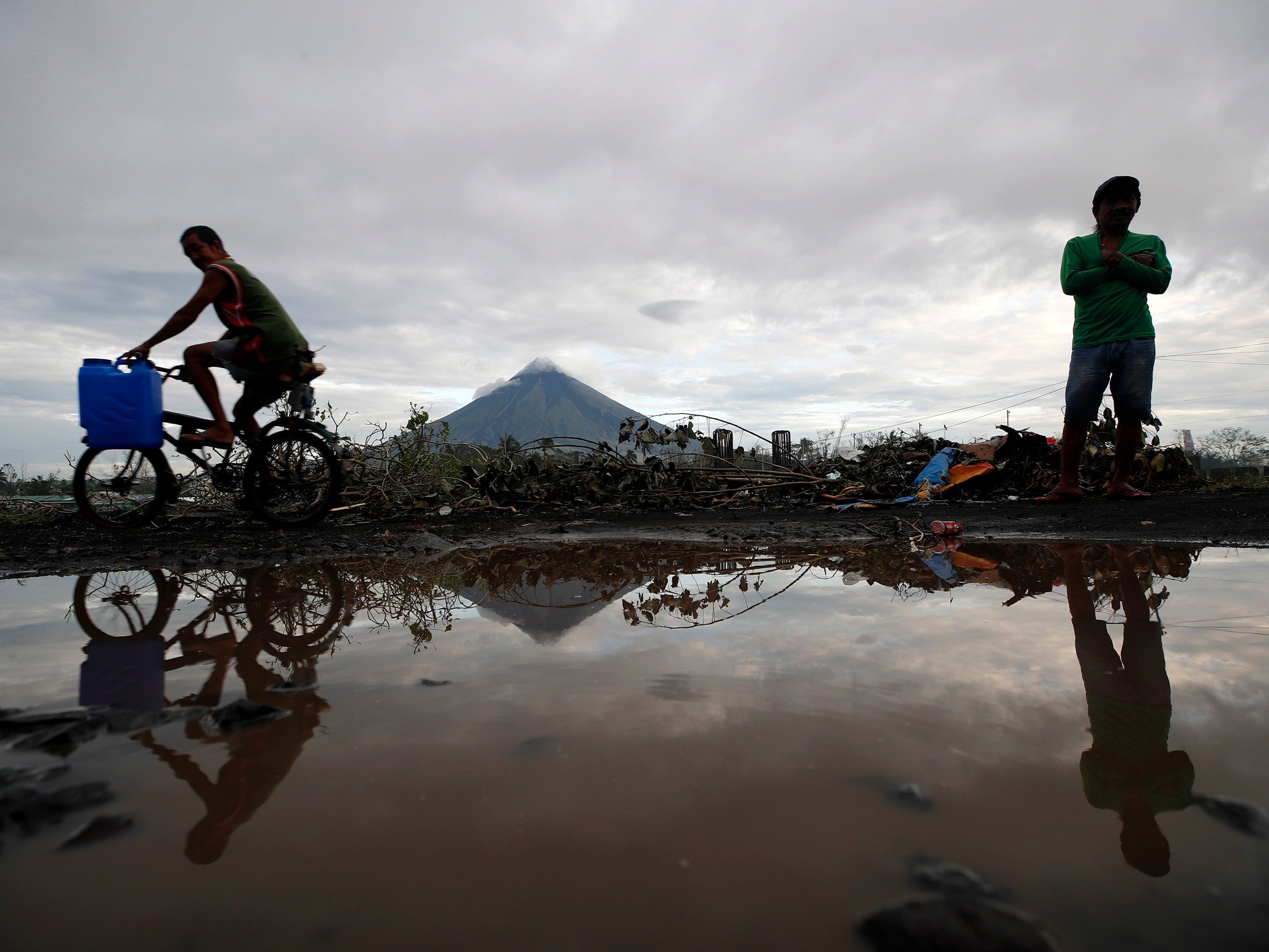Typhoon Goni: How is the ‘strongest storm of 2020’ linked to the climate crisis?
The storm is ‘proof to our world leaders that climate change is real’, a 19-year-old activist tells Daisy Dunne


Your support helps us to tell the story
From reproductive rights to climate change to Big Tech, The Independent is on the ground when the story is developing. Whether it's investigating the financials of Elon Musk's pro-Trump PAC or producing our latest documentary, 'The A Word', which shines a light on the American women fighting for reproductive rights, we know how important it is to parse out the facts from the messaging.
At such a critical moment in US history, we need reporters on the ground. Your donation allows us to keep sending journalists to speak to both sides of the story.
The Independent is trusted by Americans across the entire political spectrum. And unlike many other quality news outlets, we choose not to lock Americans out of our reporting and analysis with paywalls. We believe quality journalism should be available to everyone, paid for by those who can afford it.
Your support makes all the difference.It was an apocalypse, a circumstance you can't even imagine. On social media, we saw floating bodies on flash floods,” says Jacques Fallaria, a 19-year-old climate activist from Bulacan, the Philippines.
“The situation we are in right now should send proof to our world leaders that climate change is real and institutions should be held accountable for what has just happened in our country.”
Fallaria, a member of Youth Strike 4 Climate Philippines, was one of many thousands of people affected by Typhoon Goni, a category 5 typhoon that struck the island nation on Sunday.
As it made landfall, the typhoon brought winds of nearly 180mph, making it the world’s most powerful storm this year, according to some estimates. In Virac in Catanduanes province – the first town to be hit, up to 90 per cent of the buildings were destroyed, according to official estimates. Around 370,000 people have been displaced by the storm and thousands more homes have been devastated.
It is the worst storm to hit the Philippines since Super Typhoon Haiyan in 2013, which killed more than 7,000 people.
“Living in a country that is most vulnerable to the impacts of the climate crisis makes me feel so anxious about my future,” Fallaria told The Independent. “How can I live in a country that is visited by storms that are getting stronger year by year?”
Research has shown that, globally, major tropical cyclones – known as “typhoons” in the northwest Pacific Ocean and “hurricanes” in the North Atlantic – have become 15 per cent more likely over the past four decades.
Typhoon Goni is the third category 5 storm of 2020. It follows Cyclone Amphan, which struck India and Bangladesh in May, and Cyclone Harold, which caused widespread destruction in the Solomon Islands, Vanuatu, Fiji, and Tonga in April.
Scientists have reasoned that the growing intensity of storms is likely linked to the climate crisis. This is because tropical cyclones use warm, moist air as fuel and, as oceans heat up, more of this fuel is becoming available.
The Philippines is located close to a major ocean nursery for typhoons, making it particularly vulnerable to changes in storm risk, explains Prof William Holden, a researcher of extreme weather in the Philippines from the University of Calgary in Alberta, Canada. (The Philippines typically sees around 20 typhoons a year.)
Holden told The Independent: “Not only will there be stronger tropical cyclones, warmer air holds more water so these amplified tropical cyclones will generate heavy rainfall events, which will cause flooding and landslides over large portions of the Philippines.”
The Philippines is made up of more than 7,000 islands and more than two-thirds of its 100 million people live on the coast. People living on the coast face particularly high risks from typhoons, explains Dr Shuai Wang, a researcher of tropical cyclones from Imperial College London.
One reason for this is typhoons can bring deadly “storm surges”, a rising of the sea level that can lead to extensive flooding. As it made landfall, Typhoon Goni brought storm surges that were up to five metres high.
During Super Typhoon Haiyan, six-metre storm surges devastated thousands of homes across several islands in the Philippines. A study published in 2015 found Haiyan’s storm surges were made around 20 per cent worse by human-caused global warming.
Globally, storm surges are being heighted by sea level rise. Sea levels have risen by around 0.2m since 1900, chiefly as a result of melting land ice and ocean heating, which causes water to expand.
Without a strengthening of storm defences, coastal populations in the Philippines will likely see higher risks from storms in the future, Wang told The Independent:
“Without a change in local exposure and vulnerability in the Philippines, we may see an increase of risk induced by landfalling typhoons.”
“The Philippines does not contribute that much to the world emissions but it is our country that is one of the most vulnerable nations to the impacts of climate change,” says Fallaria. “That, for us, is very unfair.”
The Philippines produces around 131m tonnes of carbon emissions each year. This is less than half the annual emissions of the UK.
Last week, the Filipino government pledged to stop building new coal power plants as part of its “transition from fossil fuel-based technology utilisation to cleaner energy sources”, according to Climate Home News.
However, it is likely that the country will continue to see storms growing more severe in future years, Holden told The Independent:
“If climate change continues, which I am sure it will, the Philippines will be repeatedly impacted by amplified tropical cyclones and it is difficult to say what the upper limit on the strength of these storms will be.”

Join our commenting forum
Join thought-provoking conversations, follow other Independent readers and see their replies
Comments